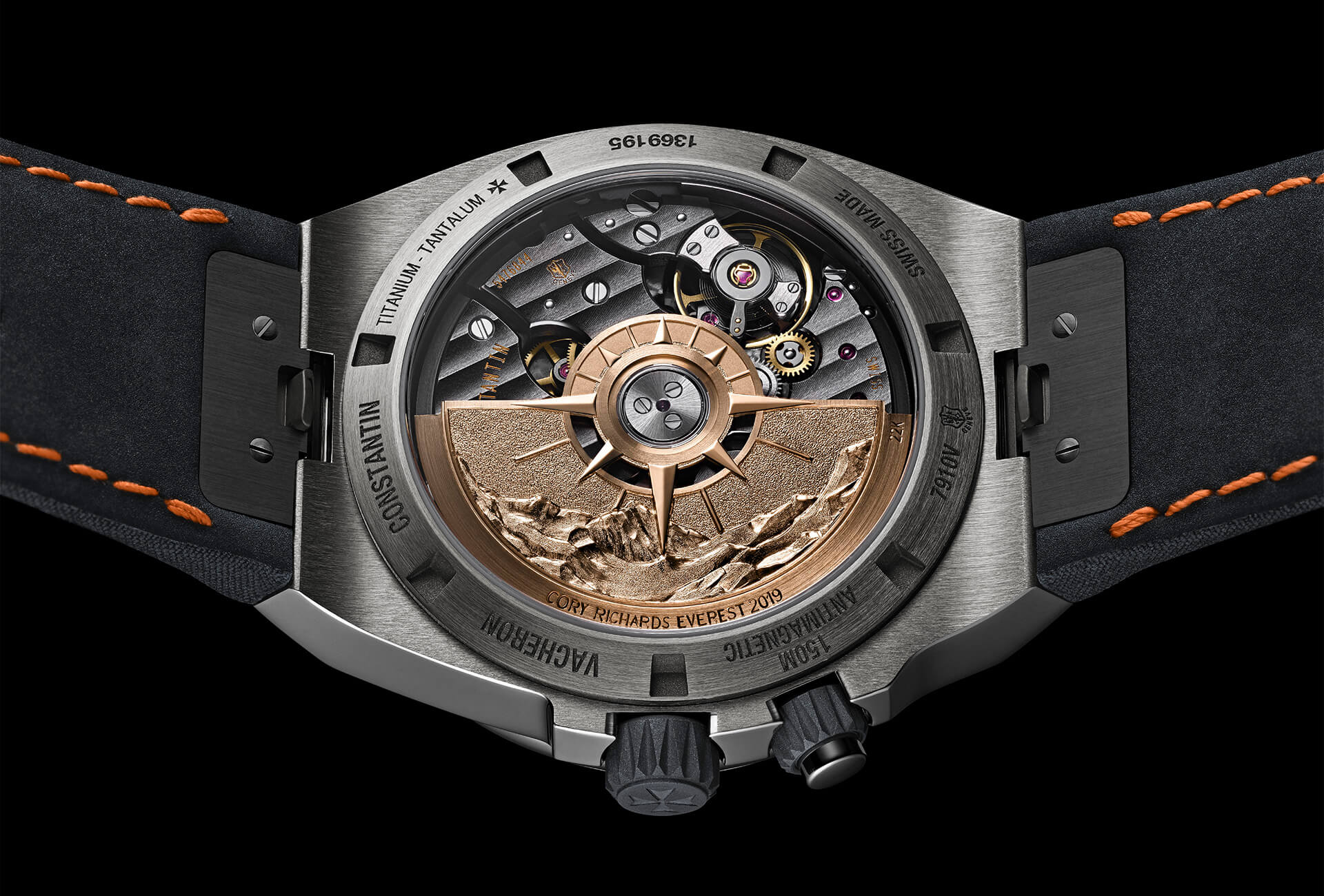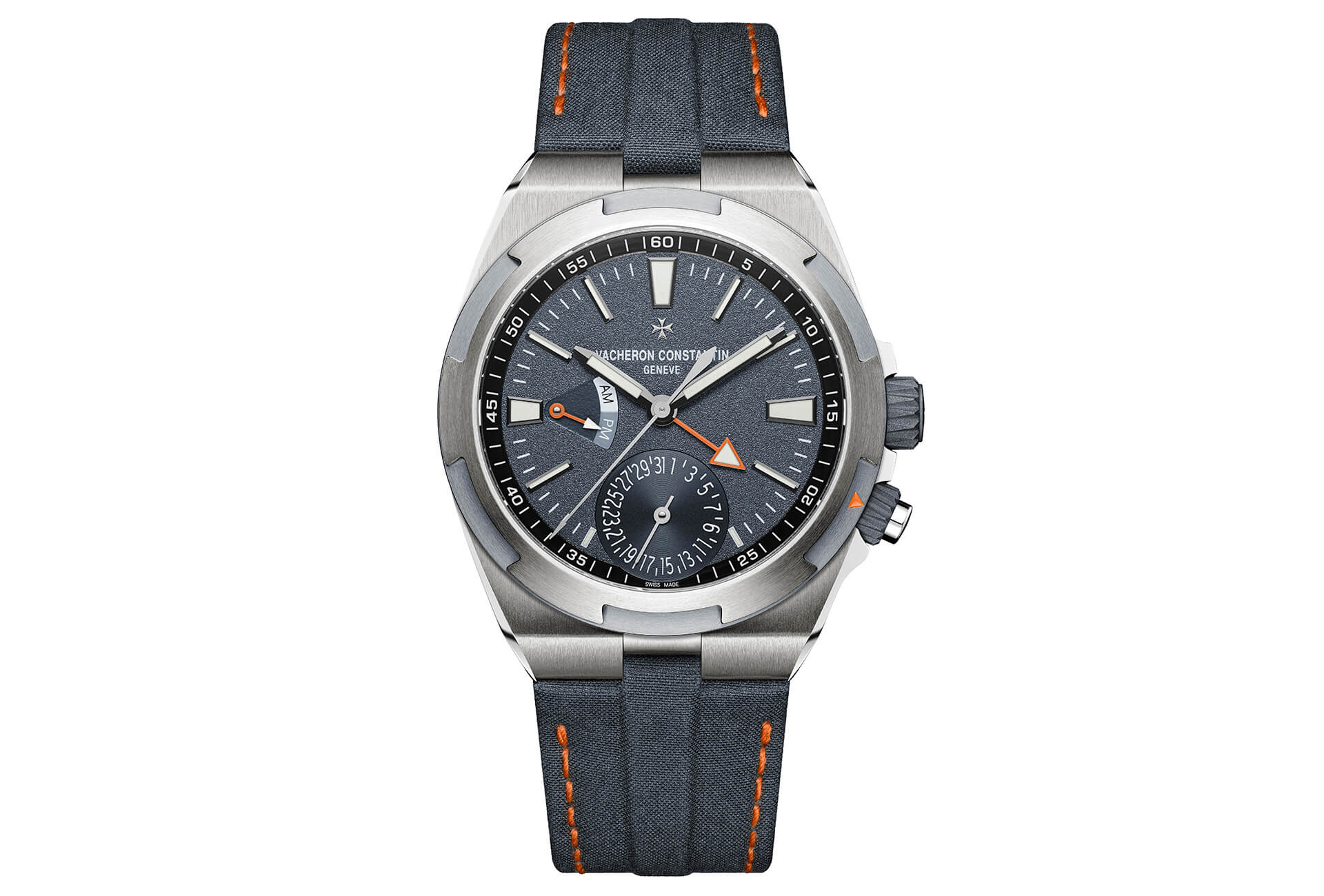Last week in New York City, Vacheron Constantin unveiled a prototype watch that was built expressly for National Geographic photographer Cory Richards. Richards, who is also a mountain climber and explorer, joined Vacheron Constantin’s “One Of Not Many” marketing campaign last fall and got right to work with them to design a watch he could take on his recent journey to Mount Everest. The Vacheron Constantin Overseas Dual Time prototype watch went the distance on his wrist.
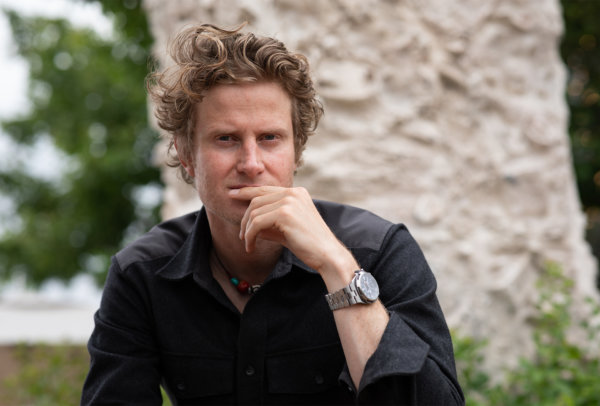
According to Cory Richards, he was in on the design process from the beginning – even selecting the type of Overseas he wanted to model the new watch after. He chose the Dual Time as a function he felt would enable him to think about those at home, those he left behind while on his various treks around the world. The watch, however, had to be reconfigured in order to work in the extreme temperatures and harsh environments Richards would be taking it into. His plan was to take a route that had never been climbed before, along the Tibetan north-east ridge, and do a push-through climb – meaning no stopping except at night- without a Sherpa or oxygen. The temperatures in that icy terrain can get as low as -40°C.
A tough prototype
Laurent Perves, Chief Marketing Officer of Vacheron Constantin, says the prototype took Vacheron Constantin’s team about six months to complete. “Initially Cory asked us if he could take a Dual Time to go up there. In talking with him about conditions and constraints we realized we had to adapt some features: one, lighten the watch as much as possible, and, two, have a strap that would not freeze or break. From there we worked on a titanium case strengthened with tantalum on the bezel, and on a specific technical fabric strap made from a fabric normally used for climbing equipment. We also added rubber on the crown and pushers to ensure isolation.” The 41mm case also features a soft iron inner case ring that protects the watch from magnetism. The screw-down crown and screw-lock pushpieces make it water-resistant to 150 meters. Vacheron Constantin worked with Richards on design elements such as the graphite-textured dial with orange details.
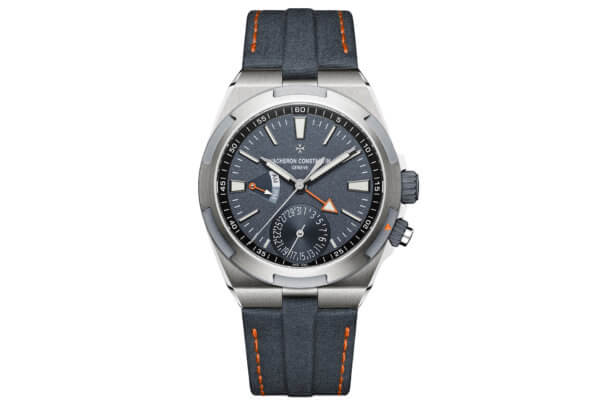
A mechanical self-winding movement that consists of 234 components and 37 jewels powers the prototype. It offers 60 hours of power reserve and displays the hours, minutes, central seconds, second time zone, day/night indication and date. The watch is further fitted with anti-glare sapphire crystal and caseback. Visible via that caseback is the movement with a 22-karat gold oscillating weight that features a hand-engraved carving taken from a photo by Richards of Mount Everest and the mountain range. “The result is a unique prototype reinforced to endure tougher climatic conditions and designed following Cory’s vision,” says Perves. “It is not a climbing/alpinist tool watch, though, and was never meant to be. Cory has specific and highly technical equipment to control and follow all aspects of his exploration, hence his Overseas was designed as a traveling companion. He wore it on his wrist, under his equipment/gloves which offer a protective layer, and so the Maison did not have to develop a particular oil or an oil-less movement.”
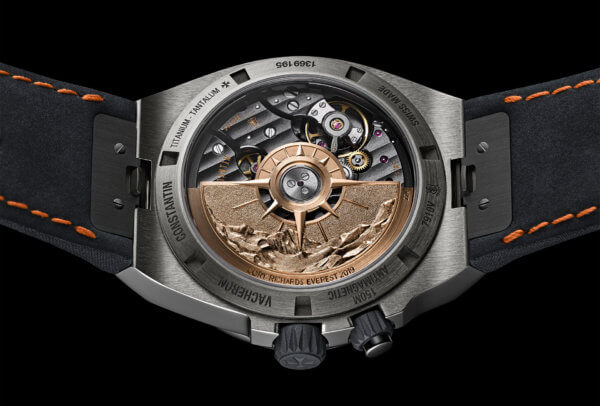
According to Richards, “The watch ran perfectly the entire time despite the challenging conditions. It is now going to go through further tests to see how it endured. But it was very important for me to take the watch on this expedition.”
Facing challenges
This was Richards’ third trek to the summit, having twice made it to the top: once with oxygen and once unassisted by oxygen (something achieved by about 2 percent of those who have summited). This third attempt – a first time on the north side of the mountain — was a journey that he and his climbing partner, Esteban Topomena, devised. Unfortunately, after climbing 40 hours up a near vertical sheet of ice with a thin snow covering, they made the crucial decision to turn back because of physical exhaustion and continually worsening weather conditions. They had made it to about 7,600 meters (24,935 feet) – with the summit at 8,000 meters– but could not risk continuing. As it was, their climb back down took another seven arduous hours.
“Is it a failure? In the strictest sense of the word, it was,” says Richards, who notes that the pair will attempt the same climb again next year. “But failure is really a means to success. You have to fail as many times as it takes before you get it right, because that is ultimately what defines perfection.” His belief is that climbing is about the journey more than reaching the summit. Richards says his parents made sure at an early age that he and his brother spent a great deal of time outdoors in nature. That was when he first found a love for climbing. He describes his youth, though, as tumultuous, citing extreme fights with his brother and a somewhat abusive relationship as a major cause. He defied the rules, leading his parents to put him in a behavioral home, from which he ran away several times. Eventually, he ended up homeless for a brief time, which he says gave him a new perspective on life and what people really need.
A life that is “one of not many”
In his twenties he discovered photography and rediscovered climbing. He joined the two together and went on expeditions to photograph mountains. During one such expedition, he and his fellow climbers were caught in an avalanche. “In that moment when I knew I was going to die, the brain starts to prepare. It goes through all sorts of flashes,” says Richards. Three of the climbers were partially buried and, luckily, were able to dig themselves and him out. “When you realize you survived that, when you see that you are still alive when the reality is that you shouldn’t be, all of those previous traumas that I had experienced came into new perspective.”
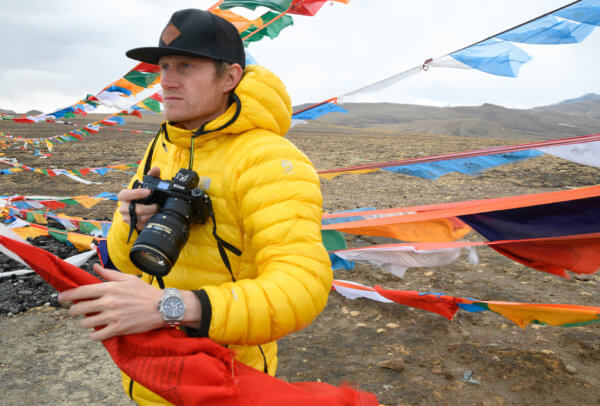
When he returned from that trip, not only did National Geographic take his photos, they put one he had taken of himself, just after being dug out of that avalanche, on the cover and ran an entire article on the journey. His career was launched (and to this day he is a photographer for National Geographic) but his personal life was swinging out of control as he struggled to deal with post-traumatic stress disorder stemming from the avalanche. For him, the ensuing few years were a journey of self-examination, therapy and introspection. “I believe strongly in therapy. A life like mine doesn’t just get unraveled; you don’t just get better. You have to do the work,” says Richards. “If you want to understand yourself, you have to take a hard look, even if there are things that aren’t pretty. It is only by doing this that you can begin to relate to other people.”
As a motivational speaker, Richards says his hardships and self-examination have helped him communicate better with people. “It was during that period, returning to the mountains and the birthplace of my problems and my successes, that I arrived at the partnership with Vacheron Constantin. I realized that this life – for better or worse – is one of not many.”











